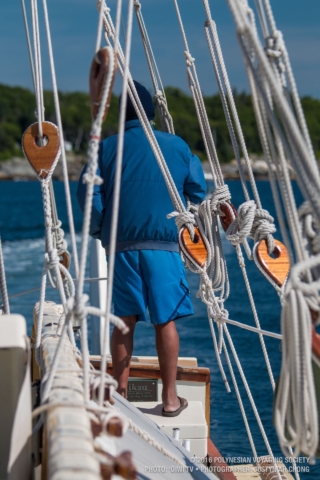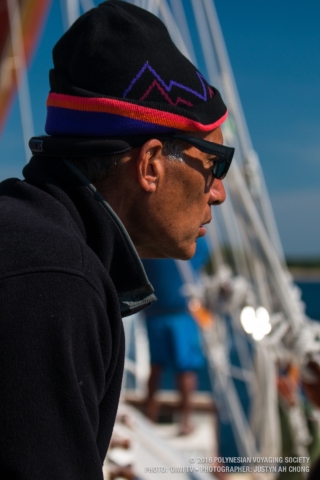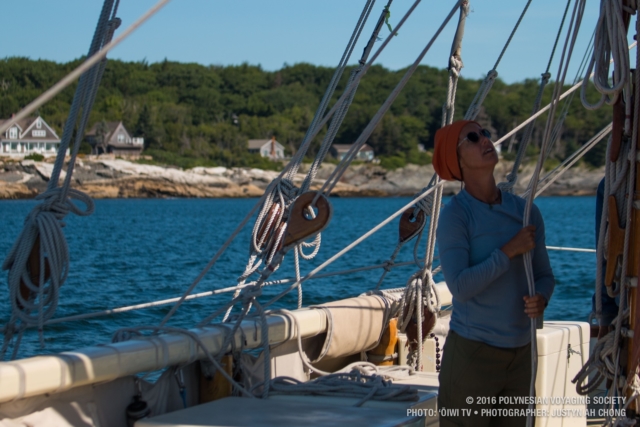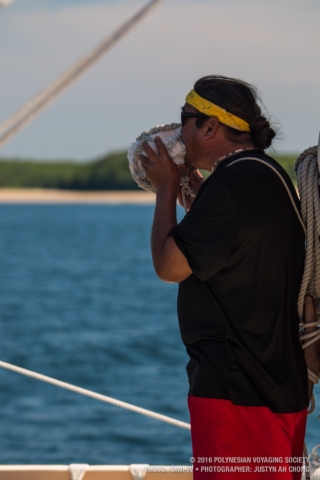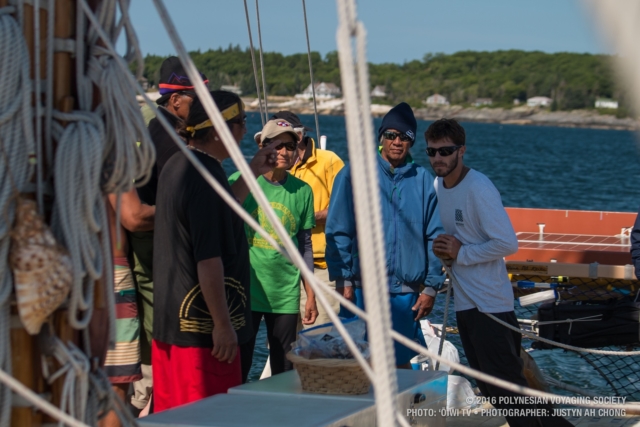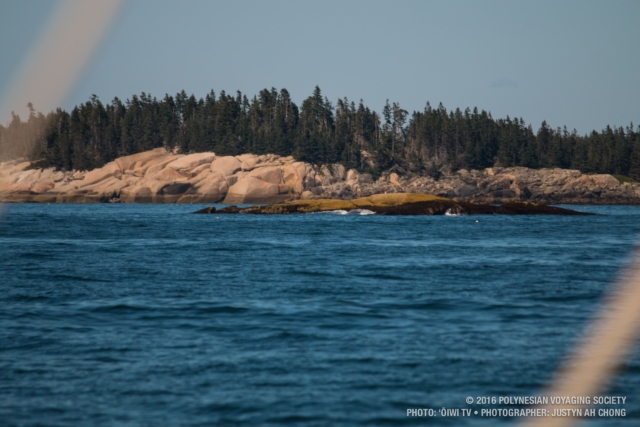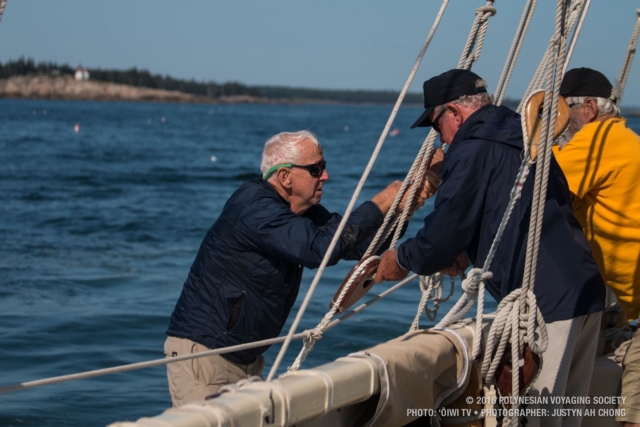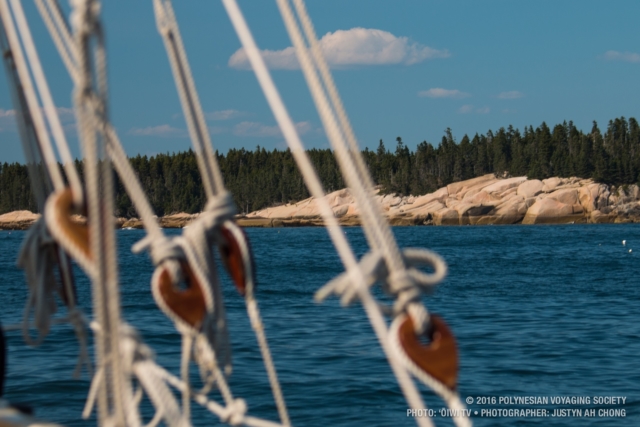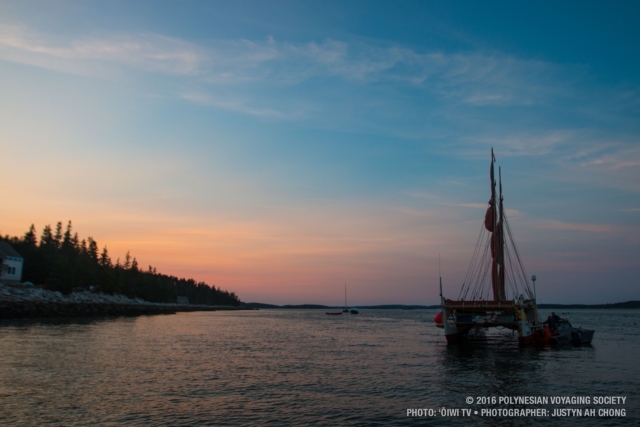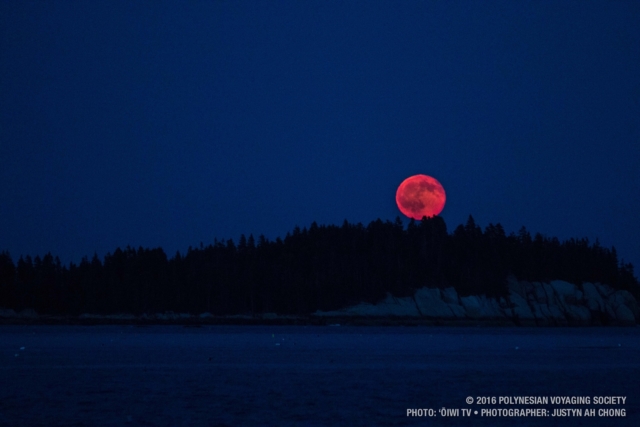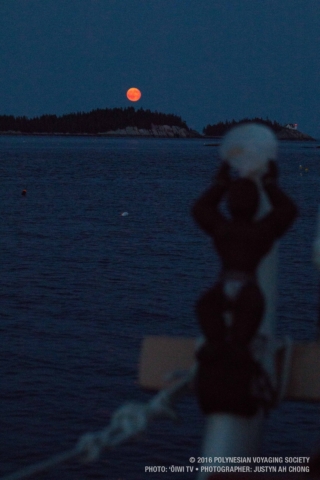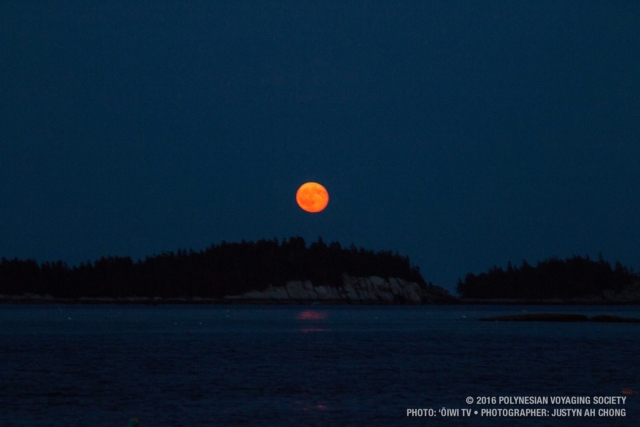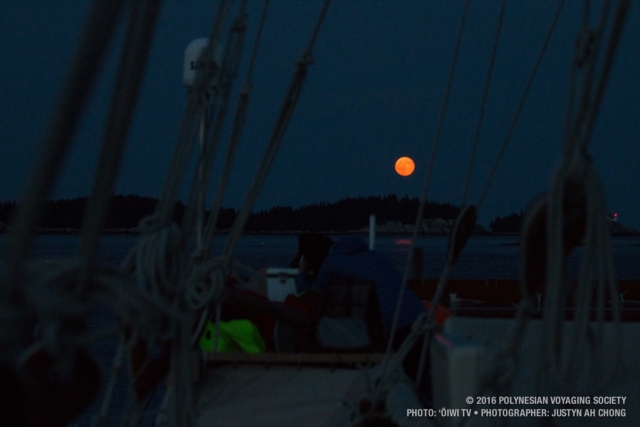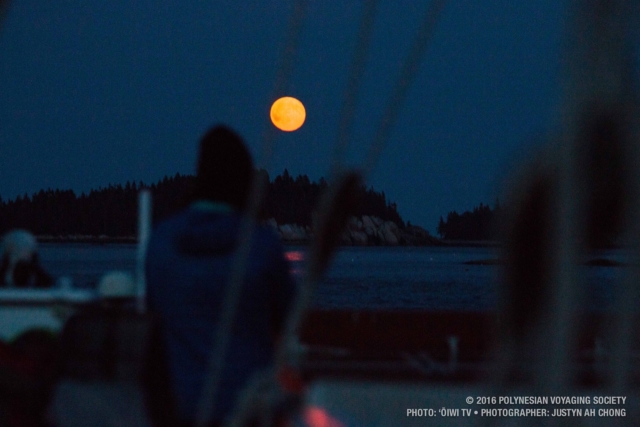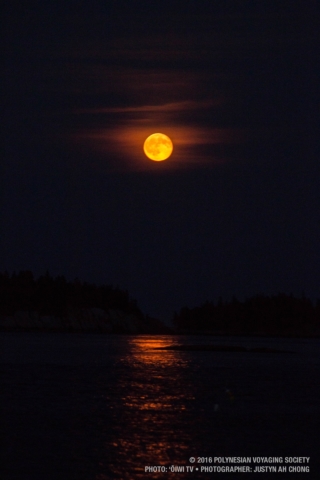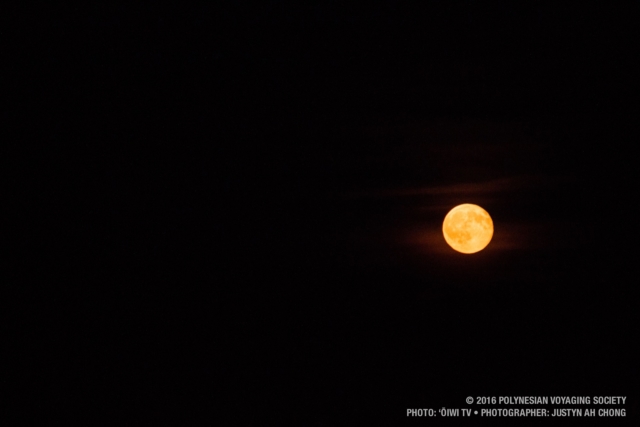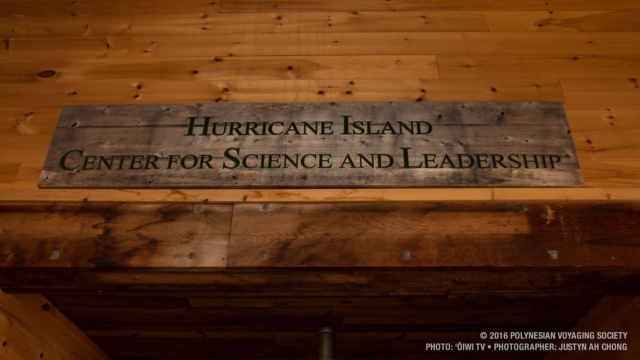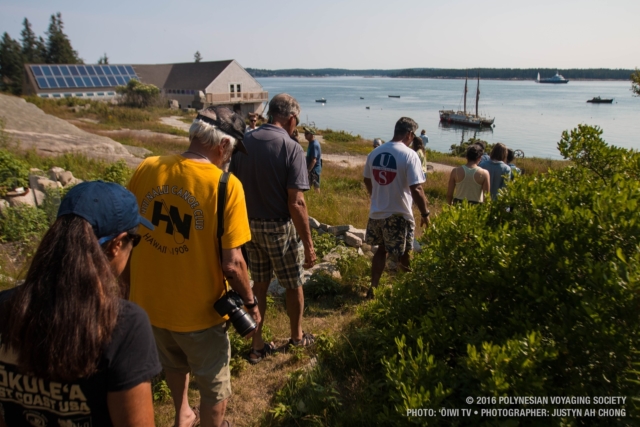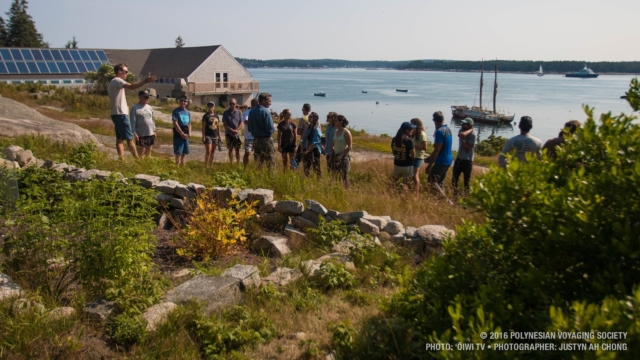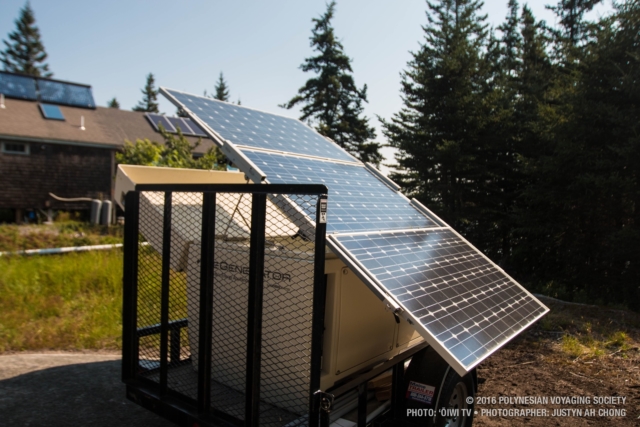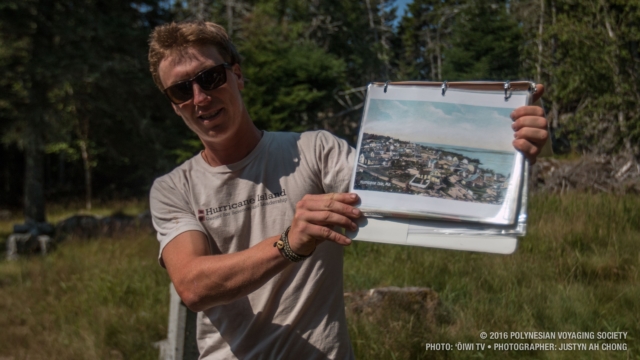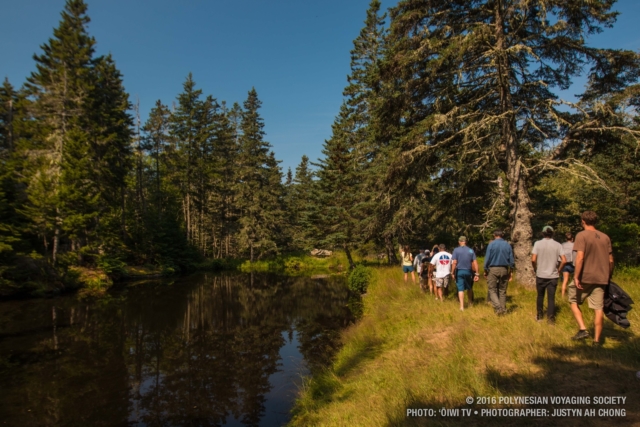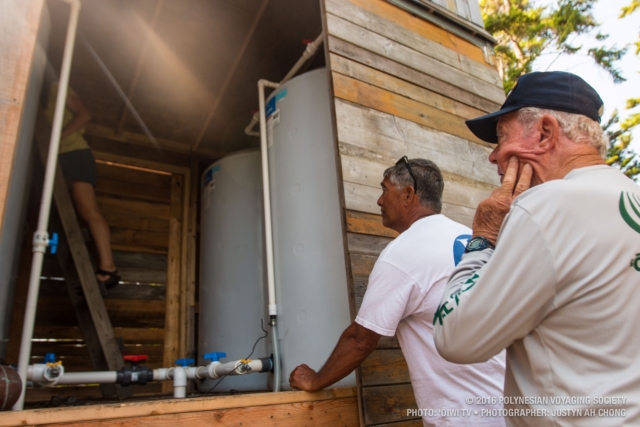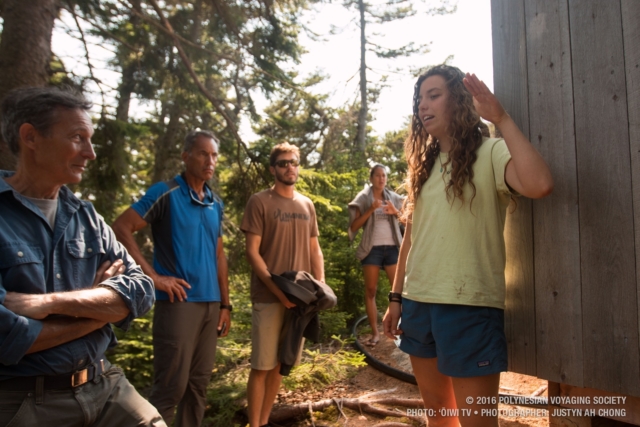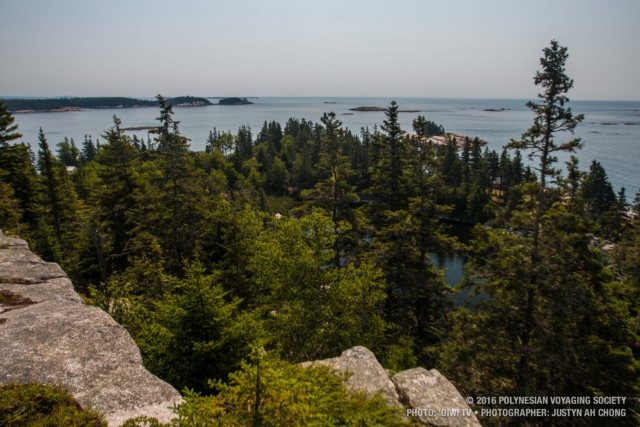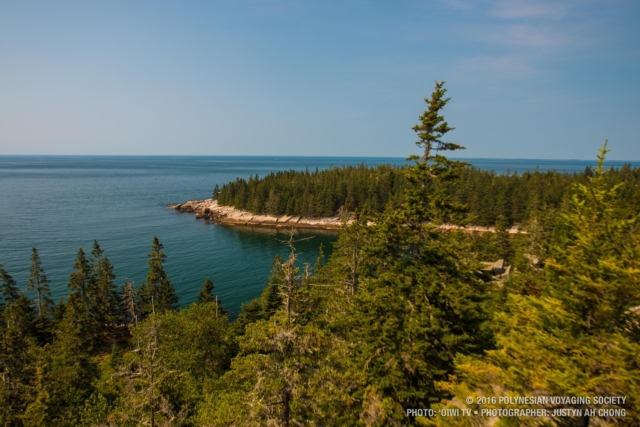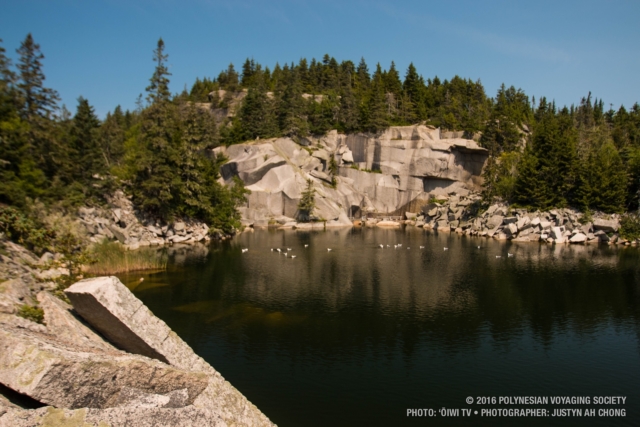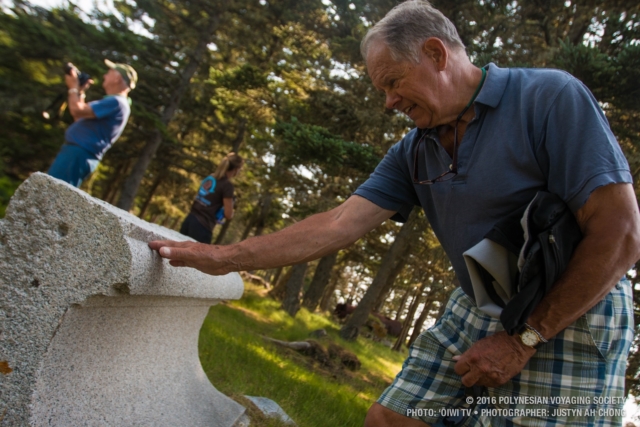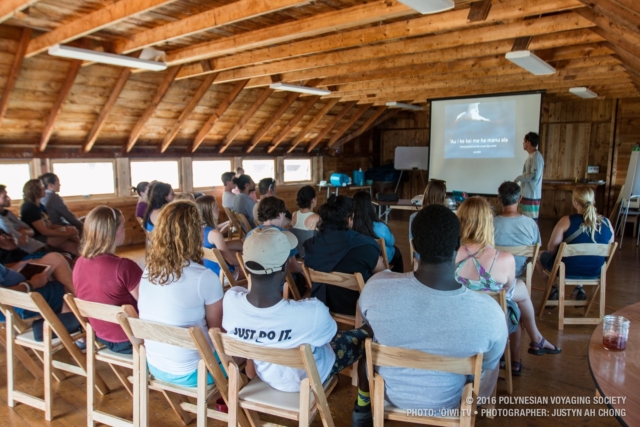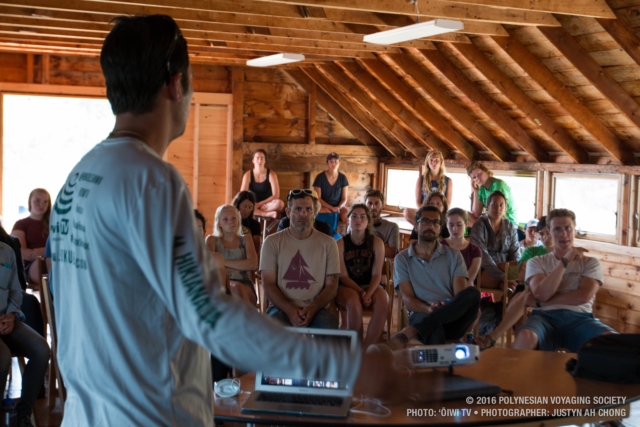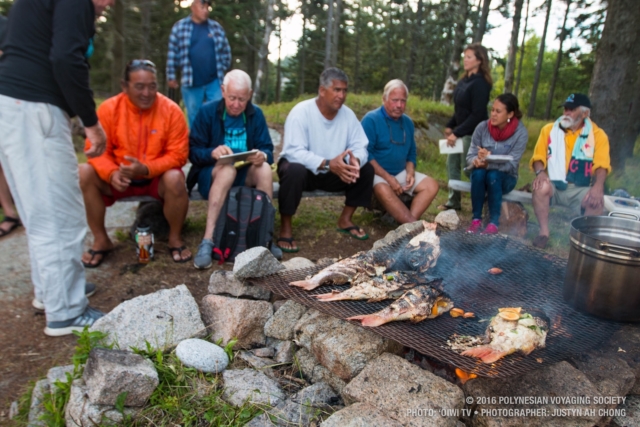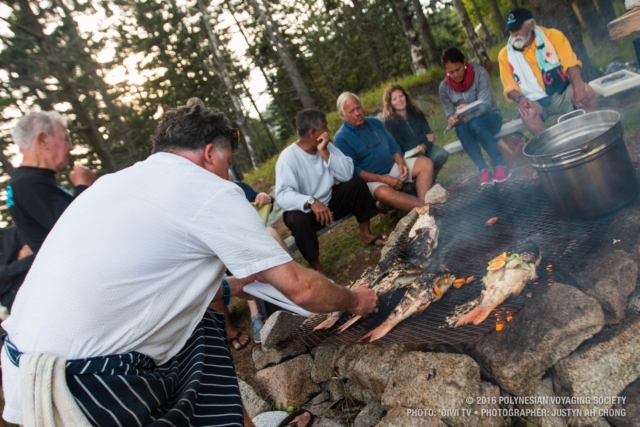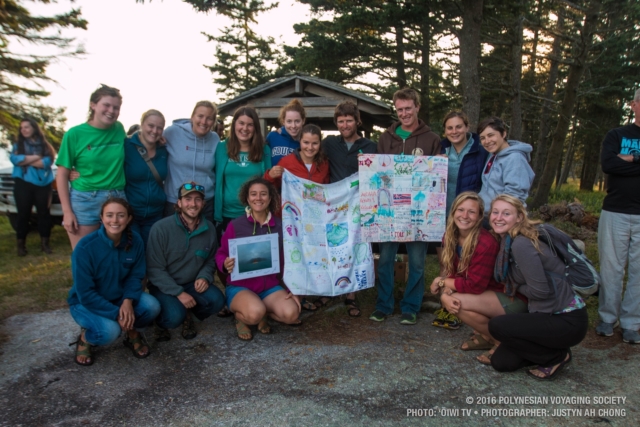
Crew Blog | Michelle Knoetgen: An Island Repurposed
- Posted on 27 Jul 2016
- In Crew Blogs, Education, Environment, Malama Honua Selects, Newsletter, Photo Galleries, Teachers
 Written by Michelle Knoetgen
Written by Michelle KnoetgenOne of the stops on Leg 21 of the Worldwide Voyage, Hurricane Island has been called a “ghost island” because, one day in 1914, an entire community of rock quarry workers evacuated, and not due to a violent storm. They dropped their tools, packed only necessities, left dining tables set and work unfinished, and were ferried to the mainland before ferry service halted altogether. This wasn’t the island’s first or the last abandonment, though it might have been the most abrupt.

A sign for the foundation hangs up in the meeting hall.
Today, clam and mussel shell middens hidden by trees and bushes remind us of the first peoples on Hurricane – a nearly forgotten Native American presence. Massive granite blocks line the shores, striking mementos of Hurricane’s quarry days around the turn of the nineteenth century. If those rocks could talk, they might explain some of the mystery of this place. Rustic cabins are built on the granite foundations the stonecutters left behind. A ropes course, along with tent platforms, a dining hall, and a large boathouse remain from Hurricane Island Outward Bound School, which was based out of the island from 1964-2006. The island’s current caretakers are members of The Hurricane Island Foundation (HIF), a non-profit that runs a Center for Science and Leadership and a Field Research Station. This is the organization that drew us here.

A blood red moonrise from the deck of the canoe.
Hōkūle‘a sailed gracefully into Penobscot Bay and sat secured to a mooring ball just off of Hurricane Island for a two-night stop. We came to learn and to be inspired: Hōkūle‘a’s crew sails around the world looking for navigators in environmental stewardship, intending to build relationships with individuals and communities who are on a sustainable sail plan.

A colored photo of the bustling town on Hurricane Island during the late 19th century granite quarrying era.
As we know, many islands across the planet are dependent on outside sources for food and power, but charged by solar, HIF is completely off-the-grid. The Hurricane Island folks are making the lightest human impact possible by growing some of their own food,, composting, and re-purposing waste. The facilities systems are all regenerative: gray water and black water are recycled; solid human waste is separated as fertilizer for non-edible plants. The instructors teach and practice a cyclical, rather than linear, method of dealing with waste.

Oakley Jackson explains the way they build their gardens and systems into the existing foundations.
Hurricane Island is now a respite for professionals in fields of sustainability and experiential learning looking to recharge and refocus on why they do the work they do. While we were there, the executive team of the Nature Conservancy was having a leadership retreat, along with passionate people from Outward Bound, The Apprenticeshop, Breaktheanchor, and Courage Earth.

Sustainability intern, Rachel Goldberg explains how the solar water heating system works.
The island has hands-on summer learning opportunities for middle, high school, undergraduate and graduate research in marine and island ecology. The crew met with high school students in the marine ecology program and the students shared their observations of seals and hermit crabs. One group of students took samples of the various types of sea kelp on the island, documenting which ones were edible and which ones dominated certain parts of the inter-tidal zone. Students were excited to learn from the island classroom: they spent almost all day outside, and were even able to learn from some of our navigators under the stars at night.

The beautiful view atop the quarry on the south end of the island.
The simplicity of life on the island reminds me of a quote by author John Ruskin: “Each increased possession loads us with a new weariness.” Here, spirits are lifted by the simple joys of foraging for wild raspberries and beach peas, and jumping into the refreshing 56-degree ocean water every day, a brisk reminder that we’re alive.
Three of the young people that I got to know, Michelle, Bailey, and Jessie, are unlike most young adults in that they’re not tethered to their phones. They’re happy to spend the summer in platform tents, collecting data for scientific research. Jessie and Bailey are studying the health of the scallop population through underwater field research, scallop collections, and lots of measurements. Michelle is an ecologist who led us on a naturalist hike around the island. They all sail and are intrigued by Hōkūle‘a, both the mission and the lifestyle.

The crew observes the marks left in the boulders by the quarry industry.
Our whole crew was impressed by the way HIF uses the island as a laboratory and an example for sustainable living. The Hurricane Island Center for Science and Leadership, under the direction of Sam Hallowell, is leaving the island better even than they found it; not leaving a trail of plastic debris and waste from overuse in their wake, as unfortunately many communities produce. I overheard my crewmate Kaleo Wong say, “Hurricane Island is all about mālama honua! They’re doing it! That’s what this whole voyage is about. Going to these places around the world and seeing what each individual community is doing to care for their home. Collectively these actions of individual communities add to a better earth.”
Help fund the Voyage as we sail the East Coast
Hōkūle‘a’s visit to the eastern United States is a historic milestone in her 40 years of voyaging.
Celebrate with us by pledging your support to the Mālama Honua Worldwide Voyage.

